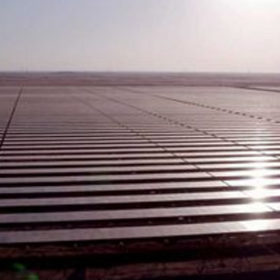Grid-resilient inverters are exposed to cyber-physical threats
New research shows all the challenges that smart inverters will have to face in the next decades, including cybersecurity issues and increasing manufacturing costs. The scientists explain that, despite the new opportunities that the Internet of Things and artificial intelligence are offering, their application may also result in an increasing number of cyber risks.
Bangladesh introduces 10-year tax exemption plan for renewables
Bangladesh has unveiled a 10-year tax exemption package for renewable energy projects. The new tax breaks will apply to power plants that begin commercial operation between July 1, 2025, and June 30, 2030.
PV fault detection method based on deep learning of aerial images
Conceived an international research group, the proposed model uses the convolutional neural network (CNN) architecture U-Net for image segmentation and the the CNN architecture InceptionV3-Net for fault classification.
Nanoparticles, phase-change materials in PVT systems
Scientists have used varying levels of Al₂O₃ and ZnO paraffin wax to improve the electrical and thermal performance of a photovoltaic-thermal (PVT) system. They have also developed a prediction model for this specific combination of hybrid nano-phase change materials.
Heliostat field-integrated PVT system supported by organic PCM
Scientists have used stearic acid and a combination of stearic acid and carbon black to increase thermal conductivity in a photovoltaic-thermal system linked to a heliostat field concentrator. From a temperature of 30 C at the inlet, they were able to heat the water to up to 59 C.
IB Vogt secures PPA for 50 MW solar power plant in Bangladesh
The Bangladesh Power Development Board (BPDB) has agreed to buy electricity from the power plant at a price of $0.1094/kWh for a 20-year period.
Indonesian utility plans 500 MW solar project in Bangladesh
Indonesia’s Pertamina Power has revealed plans to build a 500 MW solar project in Bangladesh.
Chinese venture commissions 68 MW solar plant in Bangladesh
Bangladesh-China Renewable Energy Company (BCRECL) has commissioned a 68 MW solar plant in Bangladesh. The Bangladesh Power Development Board (BPDB) has agreed to buy electricity from the facility at $0.102/kWh.
Chinese joint venture to build 100 MW ‘semi-agrivoltaic’ plant in Bangladesh
A Bangladeshi-Chinese joint venture plans to build a 100 MW “semi-agrivoltaic” project in Madarganj, Bangladesh. The facility will produce green chilies, turmeric, and ginger.
Bangladeshi jute producers go solar
Bangladesh’s state-owned Infrastructure Development Co. Ltd. (IDCOL) is providing loans to several jute producers and textile makers to deploy 40 MW of rooftop PV systems.










